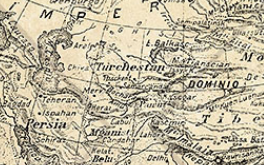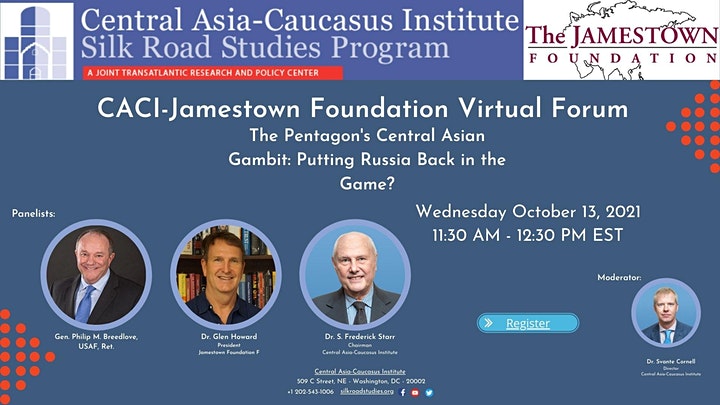CACI Forum: Lessons from Kyrgyzstan's Experiment with Parliamentarism
Lessons from Kyrgyzstan's Experiment with Parliamentarism
This CACI Forum will present some of the findings of the newly published paper from the Silk Road Papers series, authored by Dr. Johan Engvall. The paper examines successes and failures of Kyrgyz experiment of parliamentarism, which ended in 2021. Our speakers will offer analysis and comments on this unique experience for Central Asia, which lasted about a decade.
WHEN: Mar 3, 2022 10:00-11:15 EST
Speakers:
- Johan Engvall, Deputy Research Director at the Swedish Defense Research Agency. He is a Nonresident Senior Fellow with the Central Asia-Caucasus Institute and Silk Road Studies Program Joint Center.\
- Erica Marat, Associate Professor, College of international Security Affaires, National Defense University
Moderator:
- Svante Cornell, Director, Central Asia-Caucasus Institute at the American Foreign Policy Council
CACI Forum: In Ukraine’s Shadow: The Kazakh crisis and the need for a new U.S. strategy in Central Asia
CACI Forum: In Ukraine’s Shadow: The Kazakh crisis and the need for a new U.S. strategy in Central Asia
Since the U.S. launched its Central Asia strategy in February 2020, momentous changes have taken place. The U.S. left Afghanistan, new leadership in Kyrgyzstan, and the recent unrest in Kazakhstan are only the most significant examples. Meanwhile, tensions over Ukraine dominate the U.S. foreign policy agenda. While Central Asia should be part of U.S. strategic thinking, it does not seem to be. Against this background, the Central Asia-Caucasus Institute convened a forum to discuss how U.S. Central Asia Strategy can be improved in light of these circumstances.
Speakers:
- Ambassador (retired) George Krol, Adjunct Professor, The US Naval War College and Associate, Davis Center for Russian and Eurasian Studies, Harvard University
- Margarita Assenova, Senior Fellow, The Jamestown Foundation
- S. Frederick Starr, Chairman, Central Asia-Caucasus Institute at the American Foreign Policy Council
Moderator:
- Svante Cornell, Director, Central Asia-Caucasus Institute at the American Foreign Policy Council
CAMCA Conversations: Tajikistan’s Emerging Private Sector Development
Tajikistan's Emerging Private Business Development
'CAMCA Conversations': Co-organized by The Central Asia-Caucasus Institute at AFPC, The CAMCA Network and The Rumsfeld Foundation
When: Thursday, January 20, 2022, 10-11:30 AM EST
Speakers:
- Shuhrat Mirzoev, Economist and Co-Founder, IRSHAD Consulting; CAMCA Network Member
- Ozod Davlatshoev, CEO, T-Cell Tajikistan; Executive Board Member, Accelerate Prosperity; CAMCA Network Member
- Abdullo Kurbanov, Co-founder and CEO, Alif Bank; CAMCA Network Member
- Firuza Rahimova, Program Officer, Swiss Cooperation Office in Tajikistan; CAMCA Network Member
- Farukh Sultonov, Country Office, IFC; CAMCA Network Member
Moderator:
- S. Frederick Starr, Chairman, Central Asia-Caucasus Institute at American Foreign Policy Council
When: Thursday, January 20, 2022,10:00 -11:30 AM EST
New Article Series on Changing Geopolitics of Central Asia and the Caucasus

CACI & The Jamestown Foundation Forum: The Pentagon's Central Asian Gambit: Putting Russia Back in the Game?
The Pentagon's Central Asian Gambit: Putting Russia Back in the Game?
The recent reports about the Russian offer and American consideration of the hypothetical deployment of the American troops on Russian military bases in Central Asia attracted significant attention. This Forum will discuss this probability and potential implications of this discussion.
When: Wednesday, October 13, 2021, 11:30-noon AM EST


